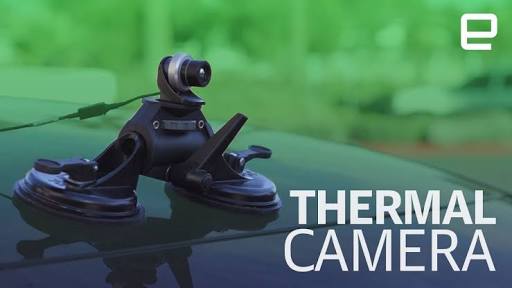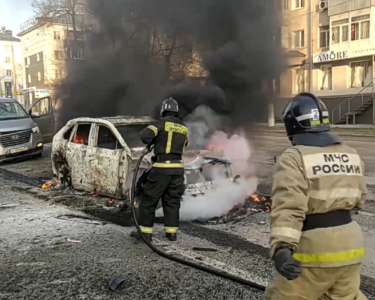Thermal cameras: key to safer self-driving vehicles. All of the sensors (including cameras, LiDAR ,radar and ultrasonic sensors) that are outfit the typical self-driving prototype, are watching the road, other vehicles, pedestrians &, very frankly, anything that can disrupt a leisurely drive.
But are all these eyes on the roadway enough for a safer journey? Adasky does not think so.
Only a few months old is the Israeli startup, but it has already built a thermal camera for a demo vehicle. The device passively does collect thermal data from the world, later converts it into a high-resolution video that the company later drops into its computer-vision system. Then whatever it sees is classified just as a car, person, animal, road & so on.
That is pretty much how other sensors work, too, the system can see and classify items that can be difficult to parse along with the typical cameras on an autonomous car.
The in-car monitor showed & classified people and animals that are based on their thermal signature.
Must Read: Telstra, Ericsson, Qualcomm and NETGEAR achieve 2Gbps speeds in live demo
Even if a system like this can not determine immediately something it sees is a person, the heat signature would at least does show that it is probably alive.
Adasky is not the only company that is looking to bring thermal vision to the vehicles. Longtime thermal imaging company ” Flir ” has recently announced an automotive development kit (ADK) for its car-mounted camera.
While a camera & LiDAR could have seen these all things, in the sunny weather it was easy to imagine them getting lost in fog, dust & even direct sunlight with all those vision-based sensors. Being able to notice the difference in temperature, even on the things like the road, is very important.
For people that drive in areas where black ice is a problem, the Adasky system will be able to see the slick surface so the car can adjust its path.
This is where Adasky believes that its thermal camera could help augment the sensors that are already getting installed on the autonomous prototype vehicles being tested on the roads. It is an additional bit of redundancy giving the car more data to work with to see this world.
Adasky team is using its years of experience developing thermal cameras for military to make the leap into automobiles. Considering how often armed forces utilise thermal imaging for drones, manned vehicles & on-the-ground troops, it is good background to have.
Adasky makes an argument that heat could be one of the way, cars understand the world & determine whether or not the blob up ahead is a human in a coat or some trash bag that is blowing into the street. Because it is incredibly important to spot the difference.




